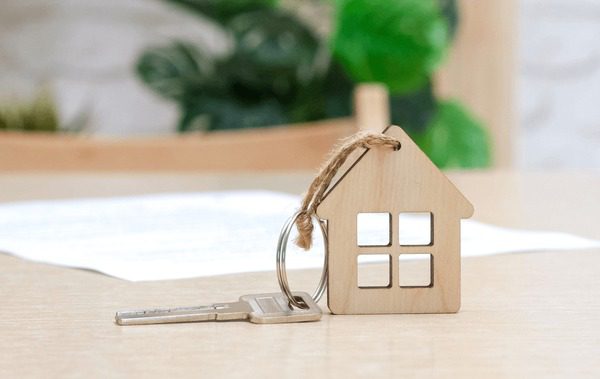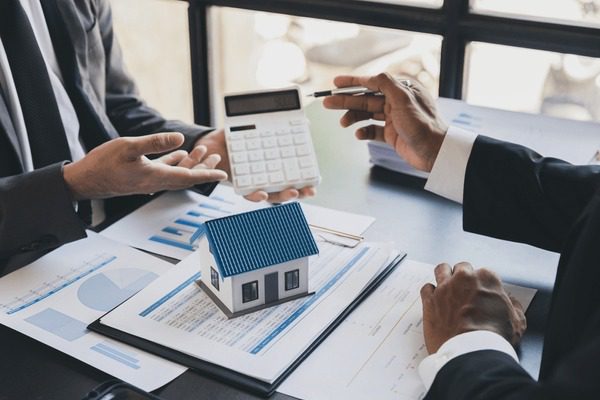Buying an old apartment can be a practical and cost-effective choice, especially in cities where new properties often come with a hefty price tag. Older apartments often boast spacious layouts, established neighborhoods, and proximity to essential amenities. However, they may also come with challenges such as higher maintenance needs or outdated infrastructure. To ensure your purchase is a worthwhile investment, it’s essential to carefully evaluate various aspects of the property. This guide will walk you through key tips and considerations to help you make an informed decision when buying an old apartment.

Pros and cons of buying an old apartment
Buying an old apartment comes with its own set of advantages and drawbacks. Understanding these can help you weigh your options and make an informed decision.
Advantages of buying an old apartment
- Spacious Layouts: Older apartments often feature larger rooms and more generous layouts compared to newer constructions.
- Prime Locations: Many old apartments are located in well-established areas with better connectivity, infrastructure, and proximity to essential services.
- Lower Price: The cost of older apartments is generally lower than newer ones in the same locality, making them a budget-friendly option.
- Established Neighbourhoods: Older properties often come with a well-established community, mature landscaping, and a sense of stability.
Disadvantages of buying an old apartment
- Higher Maintenance Costs: Old apartments may require significant repairs or renovations, increasing overall expenses.
- Outdated Infrastructure: Older buildings may lack modern amenities or energy-efficient features commonly found in newer constructions.
- Legal and Documentation Issues: Ensuring proper documentation and compliance can be more challenging with older properties.
- Limited Amenities: Facilities like swimming pools, gyms, or modern security systems may be absent.
Tips to buy an old property
Purchasing an old apartment can be a rewarding investment, provided you approach it with careful consideration and thorough evaluation. Here’s a guide to help you navigate the process and make a well-informed decision.
Understand price appreciation or depreciation
When investing in an old apartment, consider how the value may change over time. Older buildings may experience depreciation due to wear and tear, outdated systems, and rising maintenance costs. However, in prime locations or areas undergoing gentrification, these properties could appreciate in value. Factors that influence price fluctuations include:
- Location: Apartments in high-demand areas tend to maintain or increase in value.
- Building condition: Well-maintained older apartments may hold value better than those requiring extensive repairs.
- Market trends: The real estate market’s current condition, whether it’s a buyer’s or seller’s market, can also impact property values.
By understanding these dynamics, you can assess whether the property is likely to appreciate or depreciate in the future and make a decision accordingly.
Evaluate the location
The location of the apartment plays a crucial role in determining its value and livability. Check for the following:
- Connectivity: Ensure the area has good access to major roads, public transport, and essential services like hospitals, schools, and markets.
- Neighborhood quality: Research the safety, cleanliness, and overall vibe of the locality to ensure it suits your lifestyle.
- Future development plans: Look into any proposed infrastructure projects or zoning changes in the area that might impact property value or quality of life.
- Access to utilities: Verify the availability of basic amenities like water, electricity, and internet services in the locality.
Choosing an old apartment in a well-located area can enhance your living experience and yield better returns on investment in the long run.
Inspect the building’s structural integrity
The structural integrity of an old apartment is critical to ensure safety and avoid unforeseen expenses. Pay attention to the following:
- Foundation and walls: Look for visible cracks, water seepage, or signs of weakening in the building’s foundation and walls.
- Roof and ceiling: Inspect for leaks, sagging areas, or damaged sections in the roof and ceilings.
- Plumbing and electrical systems: Check the condition of pipes, drainage systems, and wiring to identify potential repair or replacement needs.
- Age of materials: Understand the materials used during construction and assess whether they need upgrading.
Hiring a professional structural engineer for a detailed inspection can provide a clear understanding of the building’s condition and help avoid costly repairs later.
Check ventilation and lighting
Proper ventilation and natural lighting are essential for a comfortable and healthy living space. While evaluating an old apartment:
- Windows and openings: Ensure there are sufficient windows and ventilation points in all rooms to allow fresh air circulation.
- Natural light: Check if the apartment receives adequate sunlight during the day, as it can reduce energy costs and create a pleasant ambiance.
- Room orientation: Consider the orientation of the apartment to understand how natural light enters during different times of the day.
- Ventilation in kitchens and bathrooms: Verify that kitchens and bathrooms have proper exhaust systems or windows to prevent dampness and odours.
A well-ventilated and well-lit apartment not only enhances comfort but also reduces the risk of mould and mildew, contributing to a healthier living environment.
Assess your financial capabilities
Before investing in an old apartment, it is essential to evaluate your financial readiness:
- Budget planning: Determine a clear budget, considering not just the purchase price but also associated costs like registration, stamp duty, and brokerage.
- Down payment: Ensure you have sufficient funds for the down payment, which is usually a significant percentage of the property’s value.
- Monthly repayments: Assess your ability to manage monthly EMIs (Equated Monthly Installments) if you plan to finance the purchase with a home loan.
- Additional expenses: Factor in costs for potential repairs, renovations, and upgrades required for the apartment.
- Emergency fund: Keep an emergency fund aside to handle unexpected financial requirements without straining your resources.
By realistically analysing your financial standing, you can make an informed decision and avoid overextending your budget.
Understand home loan eligibility
Securing a home loan for an old apartment requires understanding the bank’s eligibility criteria. Here’s what to consider:
- Age of the property: Banks often hesitate to fund very old properties, especially those nearing the end of their life span. Check the maximum age limit acceptable to the lender.
- Property valuation: Ensure the property’s current market value is sufficient to meet the loan-to-value (LTV) ratio required by the bank.
- Legal clearances: The property must have all necessary approvals and documentation, as banks conduct thorough checks before approving loans for older apartments.
- Borrower’s credit profile: Your credit score, income stability, and repayment capacity play a crucial role in determining your eligibility.
- Loan tenure limitations: The property’s remaining lifespan directly affects the tenure of the loan, with older properties often resulting in shorter repayment periods.
Understanding these factors ensures a smoother loan approval process and helps you plan your finances effectively.
Review maintenance and renovation costs
Older apartments often come with additional expenses for upkeep and modernisation. Evaluate the following before making a decision:
- Current condition of the property: Inspect the state of essential systems like plumbing, electrical wiring, and flooring to identify potential repairs or upgrades.
- Renovation needs: Consider costs for updating outdated features, such as kitchens, bathrooms, or windows, to align with modern standards.
- Long-term maintenance costs: Check recurring expenses for maintaining common areas, elevators, and other shared facilities.
- Hidden issues: Look for signs of water damage, mould, or structural wear that may require immediate attention.
- Cost estimates: Consult professionals to get accurate estimates for repairs and renovations to avoid unexpected expenses.
Thoroughly assessing these costs will help you determine if the apartment fits your budget and ensures there are no surprises after purchase.
Understand the age of the property
The age of an apartment significantly influences its value, structural integrity, and maintenance needs. Here’s what to consider:
- Building longevity: Older buildings may have weaker structures due to wear and tear over the years. Consult an expert to evaluate the building’s lifespan and safety.
- Amenities and features: Modern apartments often have updated features and facilities that older properties might lack, such as elevators, security systems, or parking spaces.
- Impact on home loans: Lenders may hesitate to finance very old properties or may offer lower loan amounts. Ensure the property qualifies for a home loan if needed.
- Future repairs: Apartments nearing the end of their structural lifespan may require expensive repairs or redevelopment in the future.
- Resale value: Older properties might have a lower resale value compared to newer constructions in the same locality.
Understanding the property’s age helps you make an informed decision, balancing affordability with the potential challenges of maintaining an older home.
Scrutinise legal documents
When buying an old apartment, it’s crucial to thoroughly check the legal documents to ensure that the property is free from disputes and all approvals are in place. Here’s what to look for:
- Title deed: Ensure that the seller has a clear and marketable title to the property.
- Occupancy Certificate (OC): The OC confirms that the property has been constructed according to municipal regulations and is fit for occupancy. Ensure the apartment has a valid OC.
- Building approval plans: Check that the building construction is approved by the local authorities and complies with zoning laws and building codes. Ensure that no unauthorised alterations have been made to the property.
- Sale deed: This is the primary document that transfers ownership from the seller to the buyer. Make sure it is registered with the local sub-registrar office.
- Property tax receipts: Ensure all property taxes have been paid up to date. Unpaid taxes could result in legal complications.
- Pending legal disputes: Investigate whether the property is involved in any ongoing legal disputes, including issues with neighbours, tenant rights, or boundary disagreements.
- RERA registration (for properties in newer developments): If applicable, check whether the property is registered under RERA (Real Estate Regulatory Authority). This ensures that the developer is accountable for the property’s construction quality and timeline.
Carefully examining these documents can save you from future legal troubles and give you confidence in the legitimacy of the transaction.
Check for existing mortgage
Before finalising the purchase of an old apartment, it is essential to verify if the property has any existing mortgage or loan liabilities. An outstanding mortgage on the apartment could complicate your purchase, leading to potential legal issues or financial strain. Here’s what you need to do:

- Seller’s loan status: Inquire with the seller whether the property is mortgaged and request documentation of the outstanding loan. This will help you determine the amount the seller still owes to the bank or financial institution.
- Clearance of mortgage: Ensure that the mortgage is cleared before the property is transferred to you. If the seller is unable to settle the loan, you may not be able to claim full ownership of the apartment. The bank or lender must issue a No Objection Certificate (NOC) once the loan is cleared.
- Verification of the property’s legal standing: Check the lender’s legal documents and records to ensure that the property is free of encumbrances. Even if the property is still mortgaged, it’s crucial to verify that the bank has no legal claim on the property.
- Mortgage settlement process: If the apartment is mortgaged, discuss how the mortgage will be settled before the transfer of ownership. Often, the mortgage can be settled through the sale amount, but this must be clearly stipulated in the agreement.
- Check for pending dues: Ensure that the property is not in default or has any outstanding payments related to the mortgage. Any unpaid dues could result in legal actions, affecting your purchase.
Review amenities and facilities
When purchasing an old apartment, it’s essential to assess the amenities and facilities that come with the property. Here’s how you can evaluate the amenities:
- Basic amenities: Start by checking for essential amenities such as water supply, electricity, and sewage systems. Ensure that these services are functioning properly and there have been no recent issues with them.
- Building amenities: Some older apartments come with additional amenities like elevators, a security system, and common areas such as parks, gyms, or community halls. Check if these amenities are well-maintained.
- Parking facilities: If you own a vehicle, parking is an important consideration. Make sure that there are sufficient parking spaces for residents, and check the condition of the parking area.
- Security systems: Ensure the building has adequate security measures such as CCTV cameras, guards, and gated entry points.
- Maintenance of common areas: In older properties, common areas such as staircases, corridors, and the entrance lobby may show signs of wear and tear. Evaluate the cleanliness and upkeep of these spaces.
- Upgraded facilities: Some older apartments might have upgraded or refurbished facilities like swimming pools, clubhouses, or play areas. Check if any of the amenities have been renovated to meet modern standards.
- Future upgrades: Determine if the building’s management or the RWA plans to introduce new amenities or refurbish existing ones.
Reviewing amenities and facilities in an old apartment helps ensure that the property meets your lifestyle needs and allows you to make an informed decision about your investment.
Negotiate the price
Negotiating the price of an old apartment is a critical step in ensuring that you get the best deal possible. Here are some key tips to help you effectively negotiate the price of an old apartment:
- Assess the market value: Before entering negotiations, it is essential to understand the current market value of similar properties in the area. This will give you a baseline for what is considered a fair price. Compare the prices of other apartments of similar age, size, and location to get an idea of the prevailing rates.
- Factor in the condition of the property: The age and condition of the apartment are significant factors in determining its value. If the apartment shows signs of wear and tear, requires renovations, or has structural issues, you can use these points to justify a lower price.
- Understand the seller’s motivation: If the seller is motivated to sell quickly (due to relocation, financial pressure, or other reasons), they may be more open to negotiations.
- Highlight market conditions: If the real estate market in the area is in a downturn or there are fewer buyers, you may be able to use this information to negotiate a lower price.
- Consider the age of the property: Older properties, while they may offer charm and character, are often priced lower than new properties due to depreciation.
- Point out long-term costs: When negotiating, you can bring up the long-term costs associated with buying an old apartment.
- Leverage inspection results: If the apartment has any issues discovered during the inspection (such as plumbing leaks, cracks in the walls, or electrical problems), you can use these findings to negotiate a discount or request that the seller address these issues before the sale.
- Offer a quick closing: If you are in a position to complete the sale quickly (for example, if you already have financing in place or can pay in cash), you can use this as leverage in negotiations.
- Start with a reasonable offer: When negotiating, it’s important to start with a reasonable but lower offer. Starting too low might offend the seller, while an offer that’s too close to the asking price might leave little room for negotiation.
- Be prepared to walk away: One of the strongest negotiation tactics is being willing to walk away if the price doesn’t meet your expectations. Sometimes, showing the seller that you’re not desperate to buy can lead to a better deal..
Negotiating the price of an old apartment requires a balance of strategy, research, and patience.
Consider future resale value
When purchasing an old apartment, it’s essential to consider its future resale value, as this could impact your long-term investment. Here are some key factors to consider when assessing the future resale value of an old apartment:
- Location: The location of the property plays a significant role in determining its future resale value. If the apartment is situated in an area with high demand, good infrastructure, proximity to key amenities, and future development plans, its value is likely to appreciate over time.
- Condition of the property: The condition of the apartment will directly impact its resale value. Even if you are buying an old apartment at a lower price, regular maintenance and timely renovations will preserve its value over time.
- Demand for old properties in the area: In some areas, the demand for older properties may be high, especially if they are located in well-established neighborhoods with historical significance or charm. In such cases, you may benefit from the property’s increasing value over time.
- Size and layout: The size and layout of the apartment can also affect its future resale value. Larger apartments or those with well-designed, functional layouts are often more desirable to a broader pool of potential buyers.
- Upgrades and additions: Make sure to consider how easily you can upgrade or modernize the apartment to make it more attractive to future buyers.
- Market trends and economic factors: The real estate market’s trends and the overall economy can also influence the future resale value of an old apartment.
Considering the future resale value of an old apartment will give you a clearer picture of its long-term potential as an investment.
Watch out for hidden/recurring costs
Buying an old apartment often comes with expenses that are not visible at first glance. These can add significantly to the overall cost of ownership if not accounted for in advance:
- Major repairs and renovations: Old buildings may require structural fixes, waterproofing, plumbing overhauls, or roof repairs. Societies often collect funds from residents for such works, which can be a heavy one-time burden.
- Elevator maintenance or replacement: Lifts in older apartments tend to break down more often, and complete replacement is a costly exercise shared by residents.
- Utility inefficiencies: Outdated wiring, plumbing, and water supply systems may increase electricity and water bills compared to modern apartments.
- Society dues and special assessments: Beyond regular maintenance, housing societies may levy additional charges for painting, compound resurfacing, or facility upgrades.
- Insurance premiums: Insuring an old building or apartment may attract higher premiums due to age and increased risk factors.
- Frequent small repairs: Older apartments may demand recurring costs for seepage fixes, pest control, or replacing outdated fixtures.
Factoring in these hidden and recurring costs ensures buyers have a realistic understanding of long-term financial commitments before making a decision.
Housing.com POV
Buying an old apartment can be a rewarding experience, offering unique character, potential for appreciation, and a chance to live in established neighborhoods. However, it requires careful consideration and thorough evaluation to avoid hidden risks and costly surprises. By following the tips outlined in this guide—such as evaluating the location, inspecting the structural integrity, understanding the property’s age, reviewing legal documents, and consulting with professionals—you can make an informed decision that aligns with your needs and budget. Patience and due diligence are key when purchasing an old apartment. While the process may seem daunting at first, a strategic approach will ensure that you are making a smart investment that will provide both comfort and value in the long run.
FAQs
How can I check the previous ownership history of the apartment?
You can request the apartment’s title deed and check the property’s ownership records at the local sub-registrar office. This will give you a clear understanding of its past owners and any potential disputes
Are old apartments more prone to pest infestations?
Older apartments, especially those in poorly maintained buildings, may have issues with pests like termites or rodents. It’s advisable to get a professional pest inspection before purchasing to ensure the property is pest-free.
Is it safe to buy an apartment with a history of water leakage issues?
If an apartment has had water leakage problems, ensure that repairs have been done properly. Ask for documentation of past repairs and consider hiring an expert to inspect the waterproofing before finalizing the deal.
Can I make major alterations to an old apartment?
Alterations depend on the building’s rules and regulations, as well as local municipal laws. You may need permission from the building association or local authorities for major renovations, especially those that affect the structure.
How do I know if the building complies with safety standards?
Check if the building has been certified for compliance with safety standards by local authorities. Ask for inspection reports or certificates regarding electrical wiring, fire safety, and earthquake-resistant measures, especially in older buildings.
| Got any questions or point of view on our article? We would love to hear from you. Write to our Editor-in-Chief Jhumur Ghosh at jhumur.ghosh1@housing.com |







